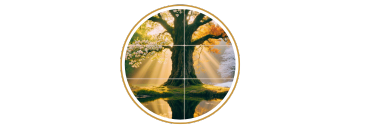任脈 (Rèn Mài) — The Conception Vessel
任 (Rèn): The character 任 signifies "to bear, to carry responsibility, to entrust." It combines the person radical (亻) with the phonetic 壬, symbolizing the body's duty to nourish and sustain. In the Conception Vessel, it evokes the profound task of carrying life, whether in the womb, in the blood, or in the hidden spark of ideas yet to be born.
脈 (Mài): The character 脈 means "vessel, meridian, pulse." It combines 月 (flesh) with 永 (eternal flow), representing circulation that never ceases, the endless river of life within us.
Together — 任脈 (Rèn Mài): The Conception Vessel is called the "Sea of Yin," the channel that governs fertility, creation, and nourishment. More than a pathway, it is a living metaphor for the body's capacity to hold, sustain, and bring forth new beginnings.
Spiritual Symbolism: The Ren Mai embodies Yin — receptive, grounding, life-giving. It stabilizes Yang by containing it and is most influential in reproduction and childbirth. It is the vessel of beginnings, carrying the possibility of renewal in every cycle.
CV3 Zhongji — 中極 (Central Pole)
Name & Imagery
At the heart of the Conception Vessel lies CV3, Zhongji — "Central Pole." This name evokes the central axis of the body, the core from which all balance and alignment emerge. Positioned 1 cun above the pubic symphysis, CV3 anchors the body's Yin energy, serving as a stabilizing force that governs the lower jiao.
Location
CV3 is located on the anterior midline of the lower abdomen, 1 cun above the upper margin of the pubic symphysis. This placement situates it at the threshold of the body's Yin realm, where the essence of life is both contained and protected.
Classical Functions
In classical texts, CV3 is recognized for its role in regulating the lower jiao, particularly in relation to the urinary system. It is used to address issues such as urinary retention, frequent urination, and incontinence. Additionally, it is considered a point for harmonizing the reproductive system, aiding in conditions like dysmenorrhea and irregular menstruation.
Modern Context
In contemporary practice, CV3 is utilized for its therapeutic effects on the lower jiao. Techniques such as acupuncture and moxibustion are employed to stimulate this point, promoting the flow of Qi and addressing conditions related to the urinary and reproductive systems.
Symbolism and Cross-Cultural Echoes
In Indian traditions, CV3 corresponds to the Svadhisthana chakra, the sacral center, which governs creativity, sexuality, and emotional balance. Both traditions recognize the importance of this area as the seat of vitality and transformation.
Daoist texts describe CV3 as the "gate of essence," a protective threshold that guards the body's vital energy. This imagery underscores the point's role in maintaining the integrity of one's life force.
Point Combinations
CV3 is often paired with other points on the Conception Vessel to enhance its effects. For instance, combining CV3 with CV4 (Guanyuan) can strengthen the body's Yin and support reproductive health. Additionally, pairing CV3 with CV6 (Qihai) may invigorate the body's Qi and promote overall vitality.
Gentle Practice for Self-Care
To honor CV3, one might engage in practices that cultivate awareness of the body's lower energy centers. Sitting in stillness, focusing on the breath, and gently massaging the area around the pubic symphysis can help activate and harmonize this point. Such practices foster a sense of grounding and connection to one's creative and reproductive energies.
Reflection
When I sit grounded upon the earth, what energies do I harbor in my lower center? Which aspects of my vitality and creativity await nurturing, so that I may feel whole, balanced, and alive?
References
GB/T 12346-2021. Nomenclature and Location of Acupoints. Standardization Administration of China.
Huangdi Neijing (Yellow Emperor’s Inner Classic). c. 2nd century BCE.
Wiseman, N., & Ellis, A. Fundamentals of Chinese Medicine. Paradigm Publications, 1995.
Kaptchuk, T. J. The Web That Has No Weaver: Understanding Chinese Medicine. McGraw-Hill, 2000.
Panagiota Sophia Vlahou
Certified Beekeeper | Specializing in Traditional Beekeeping & Natural Wellness Methods
Trained in Traditional Acupuncture – Academy of Traditional & Chinese Medicine
Member of the Beekeepers’ Association of Attica-Greece
Disclaimer: This article is for educational and informational purposes only. It is not intended to diagnose, treat, cure, or prevent any disease, and it does not substitute professional medical advice. Always consult a qualified healthcare professional before making any changes to your diet, lifestyle, or health practices.

